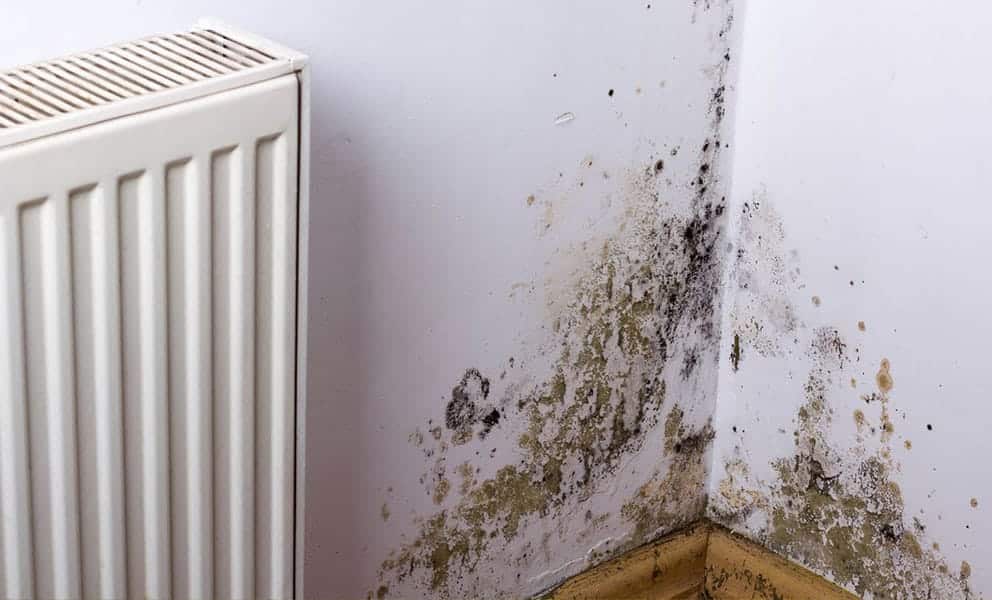
In this post, we’ll explore what causes mould in council houses, how to prevent it, and what you can do if a mould problem simply won’t go away after measures have been taken.
There has long been an issue with mould in council houses, but only recently has it been given the attention it deserves. In 2022, a housing association was found to be at fault during the inquest into the death of a two-year-old child. Awaab Ishak died from a respiratory condition, caused by exposure to mould in a council house.
Since then, the housing association in question – Rochdale Boroughwide Housing – has seen the consequences of significant failings when dealing with mould. Aside from the moral responsibility, they have had £1 million in funding stripped by the government, not to mention masses of bad publicity, leading to the resignation of the association’s chair.
One silver lining of this dark cloud is that councils up and down the country are now taking mould seriously – and rightly so. Mould produces allergens, irritants and toxic substances, which can cause respiratory problems or worsen existing conditions. It’s especially dangerous for children, older people, or anyone with a weakened immune system.
Humidity is the first pre-requisite for mould in council houses. That’s because mould requires moisture to grow, and households produce that moisture by washing, bathing, cooking or even just breathing.
A lack of ventilation is the second condition that contributes to mould development. Without ventilation, moisture can’t escape, so it becomes trapped inside a house and makes the air increasingly humid.
Finally, there’s the role of low temperatures. Moisture that’s trapped inside a home will be drawn to the coldest surfaces. That’s why you’ll often see condensation on windows, especially cold single glazing.
If a council house isn’t kept warm throughout, walls and ceilings can become particularly cold, which makes them a magnet for excess moisture.
There are two sides to preventing mould in council houses – the responsibility of the tenant and that of the council or housing association. If there’s anything the events of 2022 have shown, it’s that the latter needs to take more accountability.
When reviewing inspections of the property in the case of Awaab Ishak, the coroner found that “too much emphasis was placed on the cause of the mould being due to parent’s lifestyle and did not identify the lack of an adequate ventilation system as a factor in the presence of the mould”.
Here’s what tenants and councils can do when it comes to preventing mould…
There are a few things tenants can do to reduce the risk of mould, covering all three of the areas mentioned above.
Firstly, steps should be taken to reduce moisture in the home. That includes drying clothes outside whenever possible and using any ventilation systems in place. Extractor fans near cookers or showers should be switched on when needed or windows opened nearby.
Houses should also be kept at a comfortable temperature, above 18°c, although this is increasingly difficult given the rising cost of energy. Finally, leaving a little gap between walls and large items of furniture is a useful trick to keep air flowing.
While tenants can take some small steps, their efforts will be in vain if houses are poorly ventilated by design. It’s up to councils to make sure this isn’t the case.
Firstly, make sure extractor fans are installed and fully functional in the bathroom and kitchen to eliminate a huge amount of humidity at source. Windows are another important area. As well as being easy to open and close, they should ideally have trickle vents, which provide a small, constant source of ventilation. That means that windows don’t need to be fully opened to keep council houses ventilated.
Finally, there’s insulation, which needs to be breathable to ensure it’s not trapping moisture inside. That’s especially true for council houses with permeable walls, which are designed to allow moisture to pass through as a form of ventilation. While it might keep the house a little warmer, non-breathable insulation could be a hidden cause of excessive humidity, damp and mould.
Unfortunately, even with all the efforts above from both tenants and housing associations, council houses may still be susceptible to the development of damp and mould. That’s because some houses are poorly ventilated by design, and no amount of retrofitting can change that.
At a time when there’s a social housing deficit, decommissioning or tearing down buildings isn’t ideal. Meanwhile, replacing homes altogether is hardly practical given that councils have seen a £15 billion real-terms reduction in core government funding since 2010.
Thankfully, there is another option – a mould-resistant coating on the walls themselves. SprayCork is a breathable, insulative, moisture-resistant coating which can be applied to internal walls to stop mould forming. It can be used as a treatment when damp and mould persists after ventilation has been improved, as was the case at Shearsmith House in London.
As well as providing a mould-resistant surface, SprayCork is proven to reduce heat loss by 30% without trapping in moisture. So, it can also help tenants keep their houses warm without increasing energy bills. Additionally, the final coating is just 8mm thick, so it doesn’t impinge on their living spaces.
Want to find out more about this revolutionary coating and how it can help your organisation prevent mould in council houses? Contact CorkSol today on 01484 442420 or email [email protected].
"*" indicates required fields